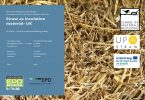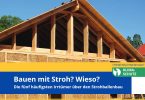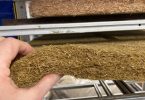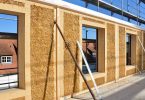
Barley straw is one of the crop residuals that can be used as a building material. Straw is the plant structure between the root crown and the grain head. The internal structure of a single straw is tubular, tough, and efficient. It contains cellulose, hemicelluloses, lignin, and silica with high bending and tensile strength. The tube shape is inherently stable and, with a microscopically waxy coat, slightly hydrophobic. Bales are compressed masses of straw left over after harvest. Straw bale construction provides high comfort and enables homeowners and building managers to reduce energy consumption for heating and cooling by about 80%.







